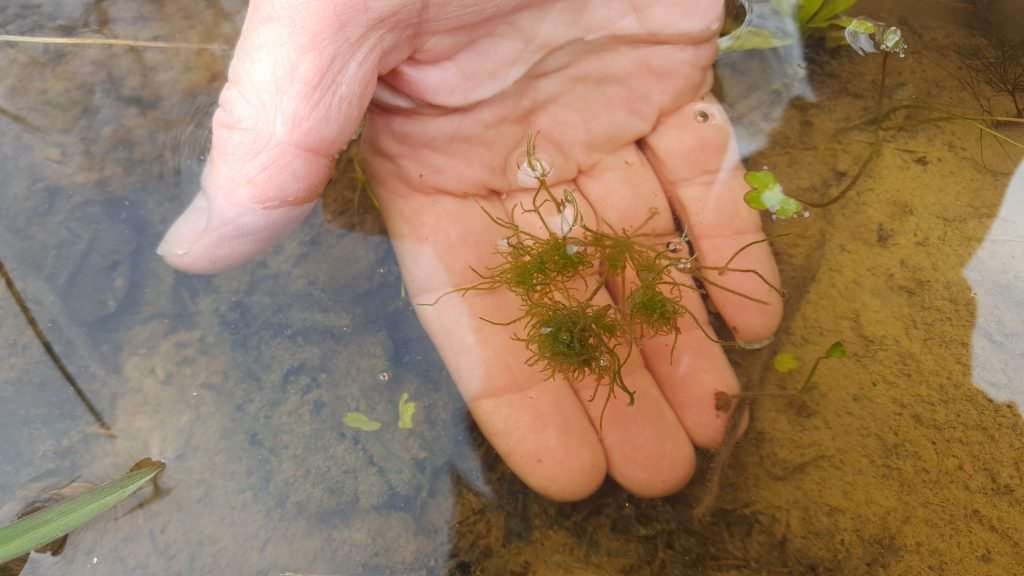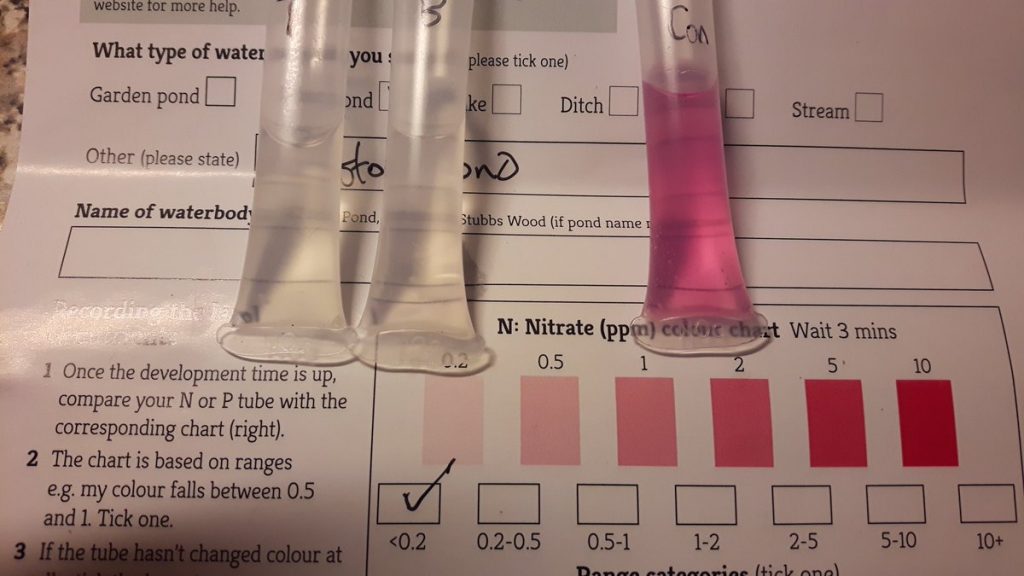Clean water havens on mineral sites
21st December 2017
When most water in the landscape is polluted, it’s great to find places like gravel pit lakes and ponds can offer a clean-water refuge for wildlife
This year we teamed up with the Mineral Products Association to carry out a Quarry WaterBlitz – a survey of nutrient pollution on mineral sites. What we found is clear – mineral sites stand out from the rest of the landscape with lots of clean water.
Why is this important?
Clean water – free from nutrient pollution – can support many different types of plants and animals, including sensitive species like stoneworts that are now increasingly rare across the UK. Water bodies that are polluted by nutrients support fewer plants and animals. The sensitive species don’t stand a chance.

Unfortunately, pollution is widespread. Three-quarters of our rivers don’t even reach ‘good’ status, never mind the ‘high’ status that allows wildlife to thrive, according to the monitoring required under the EU Water Framework Directive.
Testing the waters
There are, however, many more ponds, streams, lakes and ditches that are not routinely monitored. Our Clean Water for Wildlife survey was set up to gather information about these other water bodies, and the Quarry WaterBlitz focused on active and restored mineral sites – in collaboration with operators.

Mineral Product Association partners and volunteers used quick and simple test kits to measure phosphate and nitrate levels in active and restored quarries.

Around 100 people tested over 560 water samples, and well over half of them were clean, showing with little or no sign of nutrient pollution. The most interesting thing is where this clean water was found.

Nearly all the clean water was found in ponds and lakes. Just a few streams were found to be clean, and unsurprisingly, all the river samples were heavily polluted. This pattern is similar to those we see in other landscapes. The smaller water bodies, with a smaller catchment, have a better chance of staying clean.

What stands out though is how many lakes on mineral sites have clean water. In the wider landscape, it’s a very different picture. Most lakes, like rivers, receive water draining from wide areas, increasing the likelihood of pollution sources being present.
Case Study: Lower Windrush Valley
The Lower Windrush Valley, in west Oxfordshire, has been extensively modified by mineral extraction and there are now over 60 gravel pit lakes in the valley and many ponds that had been created through the restoration of gravel pits. Over the last two years, volunteers have tested dozens of ponds, lakes, streams and ditches in the valley.
Around two thirds of the water bodies were found to be clean. This is exceptional. Look at how it compares to other areas like the River Ock catchment and Greater London.

And when we look at where the clean water is, we see the key. Gravel pit lakes.

You can read the two case studies we’ve published about the Lower Windrush Valley on our website.
So, if we want to support freshwater wildlife, we need clean water habitats. And where can we find or make clean water habitats? In ponds and gravel pit lakes.
Not all ponds and lakes on mineral extraction sites are clean – connections to polluted ground water or rivers, use of top soil (a source of nutrients), and high numbers of fish or waterfowl are problematic – but now we know, we can make informed decisions about making and managing sites with freshwater wildlife in mind.
Quarry sites are a very important piece of the puzzle on our mission to create a rich, diverse and healthy freshwater landscape.
